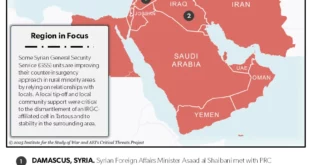 TEHRAN (FNA)- Iran is likely to cut crude exports to some global buyers in a bid to increase sales to China and India, an Iranian oil official said.
TEHRAN (FNA)- Iran is likely to cut crude exports to some global buyers in a bid to increase sales to China and India, an Iranian oil official said.
“China and India have growing economies and it is completely clear that they need more energy resources,” the head of International Affairs department of the National Iranian Oil Company (NIOC), Ali Asgar Arshi, said.
“We will open offices in Bombay and Beijing where they will be concentrating on contracts with the purpose of increasing the crude oil sale. If the levels of oil sale to these countries increase then oil sales to certain other countries will fall and supply to the free market would, also, decrease,” he added.
Rising oil consumption from China and India has offset falling demand in top energy consumer the United States.
He further declined to provide details or name the countries whose imports of Iranian crude would decrease.
Iran sends 450 thousand barrels per day of its 2.5 million bpd exports to China and 380 thousand bpd to the Indian market.
Arshi said Iran plans to increase its crude export to an Indian refinery company called Reliance from October. NIOC and Reliance currently have a contract for exchanging crude oil with petrol.
Reliance Corporation has resumed petrol exports to Iran in July which had been stopped last year.
Arshi announced that Iran imported heating oil from Turkmenistan and has stopped its fuel oil exports in an effort to fight with effects of current drought in the country. Iran has also increased imports of gasoline for fueling its power plants.
According to Arshi, the water shortage has knocked out most of the country’s 7,000 megawatts of hydroelectric power generation capacity, meaning Iran has been burning twice as much fuel oil for power generation as a year ago.
Power outages are still hitting Tehran a couple of times a day but should improve in September, Arshi said. By then, temperatures will have dropped and Iran should have stockpiled more fuel for burning at power plants.
But hydroelectric power might not be fully restored until near the end of winter in March, Arshi said.
Iran’s glut of crude that has been in floating storage off its southern Persian Gulf coast near Khark Island has also shrunk.
Arshi said it now stood at less than three million barrels, down from the roughly 30 million barrels industry sources had estimated was stored on Very Large Crude Carriers (VLCCs) in May.
The crude had been mostly sold in spot sales to refiners holding term contracts with NIOC, Arshi said, and the rest would be shipped south for processing at the Bandar Abbas refinery
 Eurasia Press & News
Eurasia Press & News


